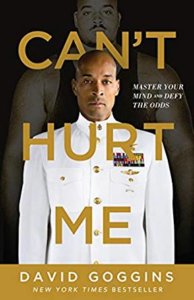There is no shortage of race training plans, strength-building exercises, and recovery plans out there for runners. If you’ve ever followed us on our journey, you know that we think the physical aspect of running (and especially racing ultramarathons) is important…but your mental side is key too. Finding the balance in training those two for a big event is a Ted Talk and a half itself. We want to dive into what happens outside of your running program. Depending on how you handle it, what you do outside of just your running can be the difference between hitting the podium and pulling from the race.
Instead of just telling you to stretch properly and practice positive self-talk, we want to share resources and tools that have had a big impact on both our training and our lives overall.
 1. 7 Way Hips Mobility Routine
1. 7 Way Hips Mobility Routine
We heard about this from Ryan Flaherty who is known as the “Savant of Speed” and has trained all kinds of professional athletes specifically looking to increase their running speed. It’s a nice short routine (it takes about 5 minutes). We like to do this after a run to force our bodies to move and strengthen in different ways and explore different ranges of motion. Overall, it’s helped our hips to feel strong and stable while running.
2. Alo Moves
Anyone who follows us will know we are big advocates of yoga. But we, like so many people, find it tough to always make it to a studio for a yoga class. Alo Moves offers all kinds of yoga classes, which makes it easy to pick something to fit your schedule. The routines help you either stretch out your hips and quads, build some stabilizer strength, or even just zone out and let yourself flow through a regular vinyasa class. We’ve been members for over 4 years now!
Another huge benefit of regular yoga is the strength work involved. An athletic therapist friend of ours explained to us that many long-distance runners risk injury when they are pushing their limit and their bodies start to fatigue. Once this starts to happen, their form will go and it’s only a matter of time before they’re at higher risk for injury. By incorporating strength work in your weekly training, you’ll be able to hold that good form even when you’re starting to fatigue.
3. Can’t Hurt Me by David Goggins
In need of developing some mental strength? This book could help you. It’s not for everyone, as Goggins is pretty frank in a lot of cases. However, hearing his journey about going through a rough childhood, extreme obesity, and ultimately becoming a Navy SEAL and running ultramarathons, is a great lesson in mental toughness.
4. Thera-Gun
While this recovery tool is a bit on the expensive side, it’s one we’ve found worthwhile. We’re still advocates of tools like a lacrosse ball, foam roller, and roller sticks for most of our recovery routes, but the Theragun can be great for digging into very specific areas that are hard to pinpoint. This includes things like tibialis, or anywhere along your forearms, and especially deep hard to reach spots around your hips). One, albeit slightly spoiled sounding, the benefit of this tool is it’s easy of use! When you’re exhausted from the day of work and training and don’t feel like rolling around the floor, the Theragun can be used while you’re sitting on the couch watching a movie, or laying in bed.
5. Ice Cold Showers
If you have the mental stamina to take your entire shower ice cold–go for it. That being said, you’ll still reap the benefits of a cold shower even if it’s for a shorter amount of time. Take your regular shower in warm or hot water. Right before you’re about to get out, crank the water as cold as it goes, whether it’s for 10 seconds or several minutes. Feeling uncomfortable? That’s the point. The simple act of turning the water cold can develop mental fortitude. You know it’s going to be cold. You know it’s not going to be comfortable. You’d rather stay in the steamy shower and take the easy road. But if you can find the courage to turn the water cold, you start to exercise that muscle in the brain that can choose to go down the hard road. Having the courage to face discomfort is key during running, whether it be during a race or just during inclement weather.
There are so many of these hidden gem resources, and we’d love to hear what the Xero community has found to have the biggest impact on your training regime.
Happy running!
Melissa & Jonathan Sinclair
The content of this post does not constitute and is not intended to be a substitute for professional medical advice, diagnosis or treatment. Always seek the advice of a physician or other qualified health provider with any questions or concerns you may have about your health or a medical condition.











 Fostering honest and responsive relationships between businesses and consumers.
Fostering honest and responsive relationships between businesses and consumers.












